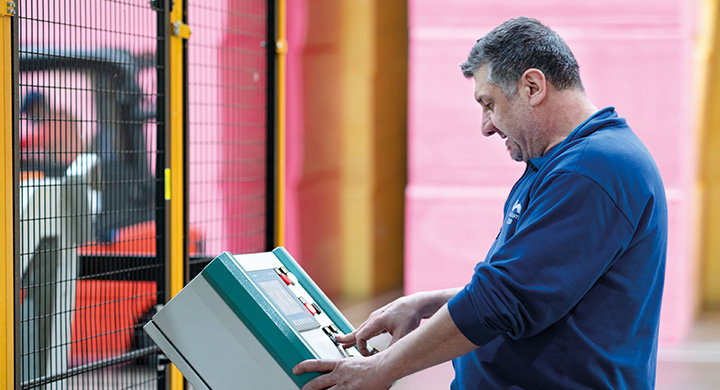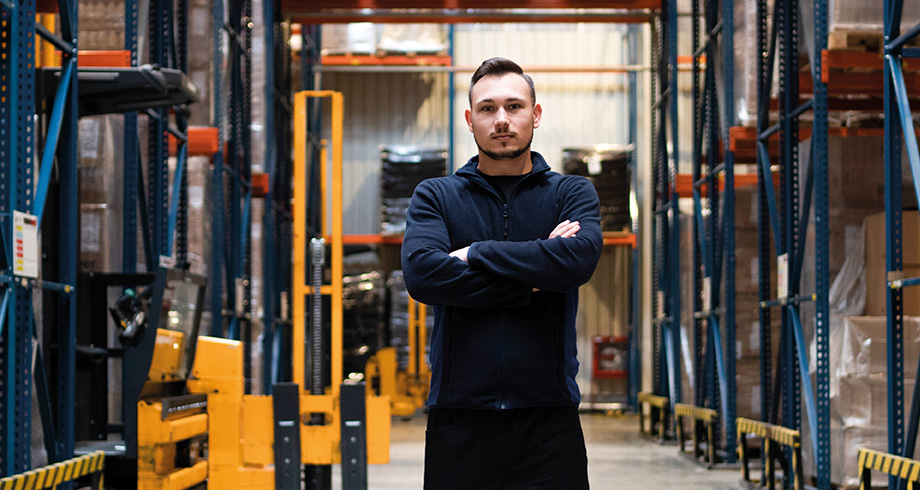Smart logistics: the key to global trade
Like other companies in our globalized market, at Greiner we have to address greener and more sustainable solutions as part of our inbound and outbound logistics. We do so first and foremost of our own accord and on the basis of our own convictions, as we are committed by the climate protection pillar of our Blue Plan sustainability strategy. At the same time, the importance of sustainable logistics concepts is growing constantly as governments and the public, as well as our business partners and customers, are increasingly aware of developments in this area and the relevant key figures.
Mounting interest in “sustainable logistics” also reflects the fact that a sustainable corporate strategy in the logistics sector also includes various social components as well as environmental aspects. Examples of these include occupational health and safety, a minimum wage and compliance with working hour regulations, which we and our business partners and customers are committed to upholding under the Greiner Code of Conduct. Commitment to sustainability in companies is worthwhile not only in the sense of social responsibility and environmental awareness. Rising energy prices mean that efficient logistics are a vital component of competition. Accordingly, sustainable operating procedures, for example by avoiding transportation routes and using carbon-neutral transport and shipping options, are also important from a business standpoint.

Push for sustainable transport
The importance of energy efficiency is particularly evident in the selection of modes of transport used for transport and logistics and their CO2 emissions. Emission trends in transport and travel are alarming. Yet the transport industry is still particularly reliant on the use of fossil fuels, with the repercussions these are known to have for the climate and the environment. Despite isolated successes in e-mobility retrofitting, there are still not enough alternatives to traditional motor vehicles to replace fossil fuels on a large scale. Nevertheless, or perhaps precisely because of this, the logistics industry is quite rightly increasingly pushing for changes that would bolster sustainability. Recommendations essentially call for better planning to improve the efficiency of transport flows in supply chains, the use of synergy and switching to lower emissions modes of transport.
Even we have not yet achieved our own targets in all of these areas. Both our inbound and outbound logistics largely rely on transporting freight on the roads by truck. We use container ships when trading materials and goods with Asia and America, as well as air transport for some individual products. Our logistics portfolio also includes some rail transport. Having said this, it should not be forgotten that the Greiner portfolio has a dual function in terms of logistics: In addition to our commitment to improved sustainability in our own company logistics, by developing lighter and space-saving products in all of our divisions we also aid sustainability efforts in the logistics of our business partners and customers. 2020 was the first year in which we begun to collect and evaluate logistics data centrally. As we do not yet systematically record logistics data – especially on outbound logistics – at all Greiner sites, we have extrapolated our impact using the parameters available. We will continue to work on improving the quality of data on an ongoing basis so that we can then provide further details about our logistics targets and more closely review our progress.
From suppliers to us
We place great value on short distances and using environmentally friendly, resource-efficient modes of transport when procuring goods and services. Whenever local procurement is not possible, we look specifically for the most sustainable means of transport while also taking into account the urgency of the respective product delivery. Our inbound logistics is dominated by road transport and, for cross-continental supply, by sea routes. What does this teach us? In 2020, 214,993,385 tonne kilometers (unit for calculating transport costs in freight transport per tonne and kilometer) of raw materials we purchased were transported by road and 216,145,820 tonne kilometers (tkm) by sea. To improve the quality of this data, in the future we will collaborate more closely with our suppliers when collecting logistics data.
Inbound logistics (2020)
Greiner
Greiner Bio-One
Greiner Packaging
NEVEON
Greiner Extrusion
Emissions generated by inbound logistics (t CO2e)
From us to customers
Outbound logistics took account of both internal group transport and transport to our customers. When it comes to modes of transport, we differentiate between road, rail, ship and air. There are no comprehensive data available for outbound logistics by road, rail, ship or air and so the data were extrapolated. This is also why we do not currently have any exact tonne kilometers for each mode of transport and each division. Based on this, emissions for outbound logistics were calculated based on estimates and extrapolations. Nevertheless, we are working on improving the quality of data in this area of logistics too. Although the sales sites are not covered by this report, we have included them when calculating Greiner Bio-One’s outbound logistics. This includes transport from the production site to the global Greiner Bio-One trading branches and onwards to customers. Onward sales of externally produced goods by Greiner Bio-One and the logistics required for this were not taken into account as production of these goods is not covered by our system boundaries.
Emissions generated by outbound logistics (t CO2e)
Our customers’ demand was subject to major fluctuations on account of the Covid-19 crisis in 2020, with a sharp drop in global demand in the first half of 2020 followed by a rapid upswing starting in the second half of the year. One reason we experienced higher overall demand worldwide is that Greiner Bio-One offers a whole host of important medical products to tackle and contain the Covid-19 pandemic, such as our VACUETTE® Virus Stabilization Tubes (VST) that we developed for Covid PCR tests. This prompted global production increases at Greiner Bio-One and, in turn, a rise in internal group deliveries between the global sites. Nevertheless, this represents an exceptional situation on account of the pandemic. The logistics diagram shows the urgency of supplies of Greiner Bio-One products in various markets. This also explains the unusual rise in our air freight shipping in 2020, which in turn increased our CO2 emissions. We also take a close look at other areas in order to reduce our environmental impact. Colleagues at NEVEON, for example, are working on compressing foam blocks. Why? Foam materials are bulky. Compressing these, meaning that more products can be transported in one truck, improves efficiency and is good for the environment.

“Our goal is to take account of emissions from logistics when developing Science Based Targets within the next two years.”
Finding innovative solutions
We have made it our goal to introduce Science Based Targets by 2023. This means that environmental targets will have to take into account not only emissions generated from our own operations but also emissions in our entire value chain. Our goal is to take account of emissions from logistics when developing Science Based Targets within the next two years. We do not have a significant vehicle fleet of our own at Greiner and instead purchase the logistics from service providers. In order to meet our future goals, we will have to work together with our partners to reduce the impact of transporting our products. Most transport is organized by our customers. As our customers face the same challenges we do when it comes to reducing our environmental impact, we will work proactively with our customers on innovative logistics solutions. Our aim must be to work with our partners on using more sustainable modes of transport or a more sustainable mix whenever this is possible. Establishing Science Based Targets requires suitably measuring transportation. We are therefore continuing to work consistently on improving the quality of our logistics data. In addition, we are also planning to launch cooperation projects with logistics companies in the medium term.

